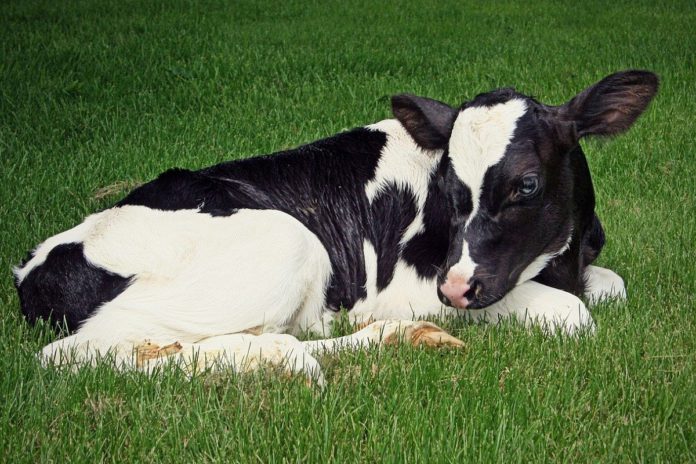An on-farm pilot in the UK aims to devise a solution to end bull calf euthanasia.
The initiative’s purpose is to tackle the “key” challenges of breeding, rearing and marketing these animals.
The move comes as the clock is ticking on changes to Red Tractor standards in 2023. It will strengthen the UK dairy industry’s commitment to “rear every calf with care”.
The UK dairy sector has pledged to eliminate any euthanasia of a healthy calf and rear all calves with care by 2023.
According to the 2020 CHAWG report, over 1.4 million calves are born to dairy cows in Great Britain alone each year.
However, the body said that improving the outcome for around 60,000 dairy bull calves with no market to take them is “a difficult but surmountable hurdle”.
The report pointed out that the challenge of “improving the outcome for around 60,000 dairy bull calves with no market to take them has proved a very difficult one”.
It believes that it may even open up new opportunities for the dairy sector.
Gwyn Jones, vice chairman of RH&W, stated the solution is to ensure “all calves have a value”.
He added that this is the focus of more than 40 organisations involved in the GB Dairy Calf Strategy 2020-2023.
Bull calf euthanasia
“For RH&W’s contribution, our pilot project in South Wales involving farmers, breeding companies, processors and rearing specialists aims to link solutions together into a viable, sustainable and profitable system.”
He explained that breeding is the starting part of the strategy. He explained there are some block calving herds containing cross cows too small to produce calves for the beef industry.
“We believe we need to look towards cows which are a minimum 470kg yet still profitable for milk solids production. Early results on this look positive,” he explained.
“We also need to ensure calf genetics are suited to the rearing system and end market, and sexed semen is used strategically so calves can be reared efficiently and profitably.”
Another aspect is viable supply chains for rearing calves, he continued.
He suggested this might involve:
- Making use of extra resources like labour and buildings from other sectors such as sheep;
- Positioning calf rearing as a way of new entrants getting into farming without land.
“As part of this, we need high-quality rearing and stockmanship. There is scope to reduce mortality and morbidity across the industry in the first 12 weeks, so these calves do not just survive but thrive.”
TB
He acknowledged that TB is also a barrier, and more could be done to facilitate the movement of calves off farms under TB restrictions, especially in South West England and Wales.
“TB-restricted calves must be able to move quickly through the system.”
“This brings us back to farms in high-risk areas using sexed semen for replacements, and avoiding the use of native breeds which are unsuitable for the intensive indoor production systems used in Approved Finishing Units.”
Jones that the last piece of the jigsaw is understanding whether calves can be marketed as high-welfare, high-quality, low carbon beef.
According to Jones, this will go hand-in-hand with improving genetics. He said it would provide a long-term solution to the lack of UK-bred beef products on the market.
“The hope is that once we have the results later this year, the model could provide a template or at least a starting point for other parts of the country,” he explained.
He said the UK dairy industry prides itself on being a “pioneer” in dairy cattle welfare.
“It is a top priority for the sector. It is important to the public as well. We know this project on sustainable dairy bull calves will offer wide-reaching opportunities to improve reputation as well as profitability,” he concluded.





